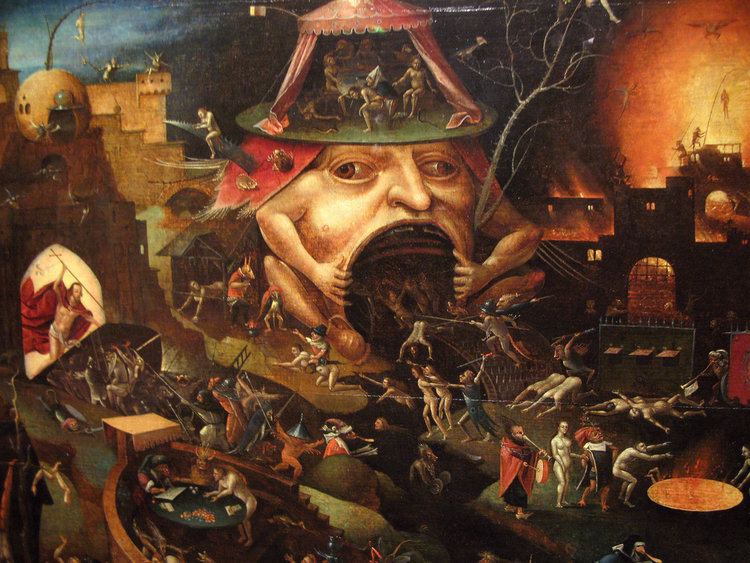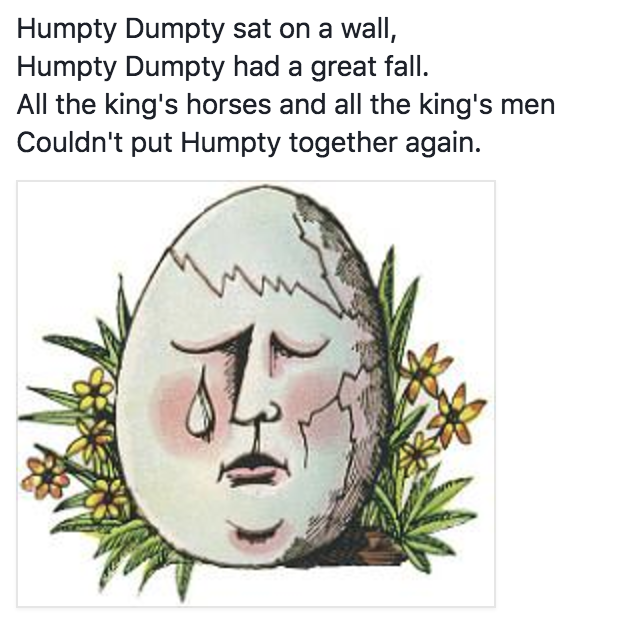R.I.P. The Cultural Turn, C. 1968-2016
We may not see something until it is dead.
One of the lessons of the CAM StL controversy is that contemporary art in its current form is perceived as meaningless. The protest that erupted in response to Kelley Walker’s artist talk was only the most recent and extreme manifestation of discontent with not contemporary art per se, but the false social claims it makes. The event rendered proof of a vapidity in contemporary art discourse that has long been suspected but not openly discussed. What was supposed to be meaningful critique of social issues had itself become a zombie formalism, an empty routine. As a result, many cultural producers have privately been harboring a deep ambivalence about being complicit in a culture that they sensed had turned out to be an empire of shame, narcissism, and nihilism.
A great wall has been erected by none other than the “politicized” culture of contemporary art. When artists post Boschian visions of hell on instagram to allegorically express their feeling of what the world has become after the election, it really shows that now it can be seen for what it has always been.
Contemporary art ideology finally revealed itself as an organ of the Democratic Party. As it stands now — if it still stands — the contemporary art ideology presents obstacles to change. It is no coincidence that the CAM controversy coincided with the global slump in the art market, the decay of the Berlin-bohemian dream, the implosion of identity politics from within, artists fleeing NYC, the slow retreat of public intellectuals into academicism, and the plummeting enrollment in MFA programs. In the age of zombie formalism, neo-modern painting undermined everything contemporary art stood for by monumentalizing the past, and the most contemporary of the arts — net art — very nearly jumped ship altogether, before it was finally reeled back in by post-internetism. In the closely related fashion world, people began dressing in the garb of the gentry class, as well as sporting New Deal-era haircuts in the US, and Weimar-era haircuts in Germany, attempting to continue the good old days while resigning from the present.
The potential dissolution of the two-party system has also torn from the faces of hell’s middle managers their rosé-colored glasses. Hell is revealed to have been developing for many years; no fully formed demons are made in a day. This disillusionment is a necessary development. But opportunity is also associated with the suffering of recognition. During this divorce, artists may develop a separation anxiety, indicating possibilities for change.
The necessary, but by no means inevitable, divorce of contemporary art from the Democratic Party will be critical: no longer will artists be marginally attached to the petit-bourgeois state by an umbilical cord of fool's gold, but will seek connection in the umbilical cord of real gold that connects it to the bourgeoisie. Art will become new by re-feeling its modern origins, and attempting to complete, instead of monumentalize the modern moment. By analogy, the current political crisis may be like a personal crisis in psychoanalysis, wherein unconscious, underlying historical issues undergo sublimation.
If there is an end of the neoliberal era, it could put art as we know it in crisis. In other words, it might become critical. No longer would political art as we know it be expected to incur change in the same way — it will forever be haunted by its insufficiency. As Allison Hewitt Ward has pointed out, the formation of culture in the neoliberal era has proven politically unviable on its own terms, not from without. Many will spend the ensuing years unlearning the ideology of the cultural turn. But these people may also remain silent. Certainly, Humpty Dumpty will not be put back together, not in any way that preserves its unity.
Adam Curtis points out in Hypernormalisation that the historically specific idea that isolated artists can change society has in truth come to undermine collective political activity, and has for the past 40 years actively sought to atomize it. Not even Greenberg thought art was the most important thing in society! “We all knew we were being lied to, they knew we knew we were being lied to, and no one did anything about it”, Curtis narrates. Only now can this become apparent. It stands to be voiced, because it couldn’t be said until now: not just its institutions, but contemporary art’s fundamental discourses and its forms are dinosaurs. A critical effect of the 2016 world events would be that contemporary art finally becomes contemporary, and not antiquarian or futuristic as it has been for quite some time. That is, contemporary art becomes contemporary in practice, and not merely in theory. The newfound confusion of the moment will seek expression.
If there's a reintroduction of politics (and not pseudo-political culture) in 2016 — something many of us have not seen in our lifetime — there will be a dramatic change in the way art is made in the coming years.
Contemporary art’s political commitments in neoliberalism were born out of both obligation and helplessness. This may change. We already feel a radical sense of alienation amongst us — people survey each other suspiciously, wondering if their neighbor is their friend or enemy. In many instances, people don't know what they themselves think. If cultural producers are feeling the world anew, this will be good for art. Will the many calls for cultural change in a post-political society finally amount to more than empty petit-bourgeois truisms? We’ll see!
Many of our political artists today might, in a different historical moment, be professional revolutionaries. If there is in fact a truly political turn ahead, they will be free to become so again. There may be more political outlets than art. The opening up of these outlets might free artists from picking up the slack in a post-political world. Art might in fact get better, and pursue new, radically indirect expressions. It also might downplay its role: the aporia with contemporary art in its current formation is due to overstimulation, and a feeling of being buried alive in culture. Contemporary art’s embarrassment of riches has long been suspected to be insensitive. At the very least, the conversation regarding what a true political art might be could be put on the table. Finally, this great discomfort might make art as expressive as it should have been before being derailed into status-quo propaganda. No longer would new forms of discontent have to be expressed through old means. In other words, if politics enter the stage, art will undergo experimentation and a clarification process itself. //



